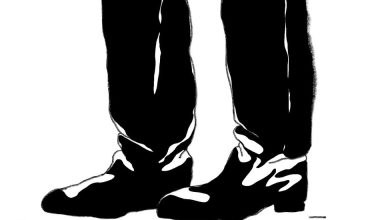Why Are So Many Americans Killing One Another?

This article is part of the Debatable newsletter. You can sign up here to receive it on Tuesdays and Thursdays.
In 2020, murders in the United States surged by almost 30 percent, the largest one-year increase since the start of national record-keeping in 1960. As the murder rate continued to climb in 2021, albeit at a slower pace, the share of Americans dying of homicide hit its highest level since 1996, according to preliminary estimates from the crime analyst Jeff Asher.
Even before the recent spike, Americans were being murdered at much higher rates than residents of similarly rich countries. Why are so many Americans killing each other, and what can be done to reverse the trend? Here’s what people are saying.
5 ways of looking at the rise in murders
The study of crime is a messy and ambiguous business, and experts still haven’t reached a consensus about what’s going on. But as my colleague German Lopez wrote this week, many point to a few broad, potentially interlocking explanations.
The pandemic. The coronavirus outbreak was — and continues to be — a mass death event that ruptured the fabric of American life. Millions lost their jobs, pushing unemployment to the highest levels since the Great Depression. Housing arrangements were upended. Schools could no longer keep teenagers safe, fed, occupied and distracted. Social services and other forms of community support that reduce crime evaporated.
“Stressors — such as unemployment, isolation and uncertainty about the future — can lead to increased frustration and anger,” writes Justin Nix, an associate professor of criminology and criminal justice at the University of Nebraska, Omaha. “People experiencing these negative emotions are more prone to turn to crime when they lack access to more positive coping mechanisms. And previous research has shown how financial stressors and a lack of social support work together to influence the overall homicide rate.”
More guns in circulation. Sales of firearms between March and June of 2020 exceeded predictions by some three million, reaching the highest levels on record in June and spiking again in the wake of the attack on the Capitol.
Research has consistently found that where there are more guns, there are more shootings. The surge in gun purchases could explainwhy murders and violent crime overall are up, but other crimes, like rape and robbery, are down. It could also explain why 77 percent of all killings last year involved a gun — more than in any previous year.
[“The Data Are Pointing to One Major Driver of America’s Murder Spike”]
Changes in police behavior. Another theory is that the fallout from the 2020 racial justice protests could have contributed to the increase in murders by curdling police-community relations. Under heightened scrutiny, police officers may have pulled back from doing their jobs.
It wouldn’t be the first time that high-profile killings by police coincided with a spike in murder rates, which also rose nationally after the 2014 killing of Michael Brown in Ferguson, Mo. Some observers called this phenomenon the “Ferguson effect,” positing that the protests against police brutality had made officers more afraid or unwilling to do their jobs.
But the Ferguson effect is a much-disputed idea. Some crime experts have turned the theory on its head, arguing that high-profile killings by the police make people, especially people of color, more averse to calling the police in the first place and to cooperating with them to prevent and solve murders. (This might help explain why, in 2020, the clearance rate for murders dropped to 54 percent from 61 percent in 2019.)
In any case, the rise in murder is a broad-based phenomenon that doesn’t map onto any regional pattern of police or prosecutorial reforms undertaken after the George Floyd protests.
In addition to Lopez’s list of potential explanations, here are two more.
A decline in policing, or a decline in witnesses? In The Washington Post, the journalist Radley Balko cites research suggesting that the presence of unofficial “sentinels,” such as private security guards and neighborhood watches, exert a similar deterrent effect on crime as the police. Last year, of course, as the coronavirus prompted social distancing restrictions and business closures, people — including potential witnesses — retreated from public space.
Balko believes this can help explain why murder — which tends to be fueled by domestic violence, gang conflicts and drug trading — increased while other crimes more dependent on public interactions fell. “Officials in cities that saw some of the largest murder surges in 2020 and 2021 — including Albuquerque, Indianapolis, Chicago, Los Angeles and others — all have said much of the spike could be attributed to drug- and gang-related murders,” he writes. “So the events of 2020 produced conditions that both encouraged turf wars and gang rivalries, and at the same time undermined the single biggest deterrent to public violence — the presence of witnesses, whether they were police or bystanders.”
General anomie. Another theory about the rise in murders contends that the pandemic accelerated (but did not necessarily initiate) an unraveling of the social contract. Murder is on the rise, but so too are other, less extreme manifestations of antisocial behavior, like reckless driving, aggression from airplane passengers and disruptive conduct in schools.
Aside from the pandemic, the proposed causes for anomie are legion, including the decline in church and union membership, the rise of social media and deepening socioeconomic inequality in a diminished welfare state. Whatever the reason, the Times columnist David Brooks concludes that “over the past several years, and over a wide range of different behaviors, Americans have been acting in fewer pro-social and relational ways and in more antisocial and self-destructive ways.”
What’s to be done?
If pandemic-related factors are to blame, the problem may partly resolve itself as the pandemic wanes and employment levels rise, Anthony Barr and Kristen Broady of the Brookings Institution write. Similarly, if the decline of “sentinels” in public space was a major contributor to the murder spike, “we should see the numbers come down as the country returns to normal,” Balko predicts. “And indeed, the homicide surge appears to be slowing, and even reversing in some cities that have opened up, such as New York and Boston.”
But if changes or deficiencies in policing are to blame, the solutions are less obvious. One idea, which President Biden himself has embraced, is to invest more money in police departments and to hire more officers. While the relationship between police staffing levels and crime is still debated, there is a fairly robust body of research that shows a salutary effect.
-
One recent working paper for the National Bureau of Economic Research, for example, estimated that each additional police officer abates approximately 0.1 homicides. (The researches noted, though, that the reduction was much less pronounced in cities with large Black populations.)
-
Another widely cited study found that every $1 spent on extra policing generates about $1.63 in social benefits, primarily through fewer murders. (When conducting cost-benefit analyses of public safety investments, many federal and state agencies value the average life at around $7 million.)
“I’m as much a reformer as anybody, but the short-term solutions around high violence are mainly punitive,” John Roman, a researcher at the University of Chicago, told Lopez. “There’s no getting around that.”
[“The case for hiring more police officers”]
But many disagree with an exclusively police-intensive approach. In a recent survey of criminal justice experts, about two-thirds said that increasing police budgets would improve public safety. But 85 percent said — and with greater confidence — that increasing spending on housing, health and education would also do so.
As John Pfaff, a criminologist and professor at Fordham Law School, argues, social spending solutions can be more cost effective than policing, an important consideration for states with limited budgets. One study found that $1 spent on medical drug treatment, for example, reduced the social costs of crime on average by




